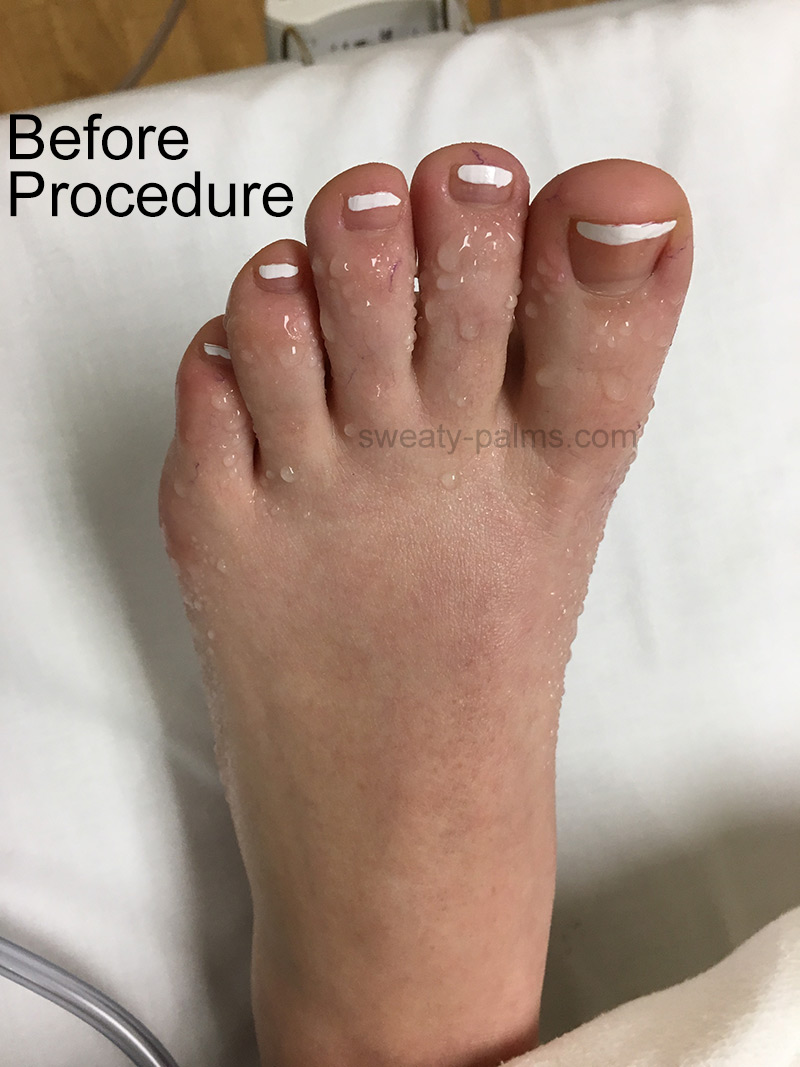Dermatology Tips and Treatments for Hyperhydrosis of Hands: Ingenious Solutions
Dermatology Tips and Treatments for Hyperhydrosis of Hands: Ingenious Solutions
Blog Article
Unveiling the Intricacies of Excessive Sweating: A Comprehensive Overview to Diagnosis and Management
Extreme sweating, medically called hyperhidrosis, is a condition that affects a significant number of individuals and can have an extensive effect on their lifestyle. While sweating is an all-natural bodily feature, its overactivity in hyperhidrosis offers an unique set of obstacles that usually go past mere pain. Comprehending the underlying causes, identifying the signs and symptoms, and browsing the diagnostic procedure for hyperhidrosis can be detailed tasks. In this comprehensive guide, we will certainly check out the intricacies of hyperhidrosis, from its medical diagnosis to the array of treatment choices readily available, clarifying reliable monitoring techniques for those coming to grips with this problem.

Recognizing Hyperhidrosis Causes
Hyperhidrosis causes can be credited to various variables such as genetics, hormone inequalities, and certain clinical problems. Genetics play a significant duty in primary focal hyperhidrosis, where individuals inherit the problem from their relative. This sort of hyperhidrosis frequently manifests in specific locations like the palms, soles of the feet, underarms, and face. Hormonal imbalances, especially an overactive thyroid gland or menopausal modifications, can additionally activate extreme sweating. Additionally, particular medical conditions such as diabetic issues, heart illness, and infections can lead to secondary generalised hyperhidrosis. These underlying health and wellness issues can disrupt the body's natural cooling system, creating the sweat glands to end up being overactive. Comprehending the source of hyperhidrosis is critical in diagnosing and properly handling this problem. By recognizing the specific variables adding to excessive sweating, doctor can tailor therapy plans to resolve the underlying reason, using alleviation and improving the lifestyle for people influenced by hyperhidrosis.
Identifying Hyperhidrosis Effects

Additionally, hyperhidrosis signs and symptoms might materialize in social and psychological distress, as people may really feel embarrassed or anxious about their sweating, causing evasion of social situations (Sweaty hands treatment). Furthermore, duplicated episodes of excessive sweating can cause skin maceration, fungal infections, and an overall reduction in self-worth
Diagnostic Process for Hyperhidrosis
Initiating the diagnostic process for too much sweating involves thorough assessment of the individual's case history and physical exam. Asking about the beginning, period, and triggers of sweating episodes is essential to distinguish in between main focal hyperhidrosis and second generalized hyperhidrosis. Medical history needs to also include concerns concerning drugs, medical conditions, and household background of hyperhidrosis.
Throughout the physical exam, certain focus is paid to the locations influenced by sweating. The doctor might assess the degree of sweating, check for indicators of underlying conditions, and evaluate the effect of sweating on the person's high quality of life. In addition, specific examinations like the gravimetric examination, starch-iodine examination, or navigate here skin conductance measurements might be conducted to measure the quantity of sweat created.
Furthermore, in cases where additional hyperhidrosis is presumed, additional tests such as blood examinations, pee examinations, and imaging studies might be recommended to identify the underlying source of too much sweating. The diagnostic process intends to properly figure out the type and cause click site of hyperhidrosis to guide appropriate monitoring techniques.
Therapy Choices for Hyperhidrosis
When resolving too much sweating, various treatment alternatives are available to ease symptoms and improve the person's high quality of life. The treatment method for hyperhidrosis depends upon the intensity of symptoms and the client's response to preliminary therapies.
Topical treatments, such as aluminum-based antiperspirants, are frequently recommended as the very first line of protection for managing mild situations of hyperhidrosis. For individuals with much more serious signs, dental medications like anticholinergics might be prescribed to help lower sweating.

Effective Management Strategies
To successfully take care of hyperhidrosis, a extensive and customized therapy plan customized to the patient's details needs and response to previous try here therapies is essential. This plan might incorporate a mix of therapeutic approaches, consisting of way of life alterations, topical therapies, oral drugs, botulinum contaminant injections, iontophoresis, and in serious situations, surgical treatments like sweat gland removal or sympathectomy. Way of living adjustments such as putting on moisture-wicking clothes, using antiperspirants, and practicing stress-reducing techniques can complement medical interventions. Topical antiperspirants containing light weight aluminum chloride are usually the first-line therapy, with stronger formulas offered for immune situations. Oral medications like anticholinergics might be recommended for generalized hyperhidrosis. Botulinum contaminant shots work for focal hyperhidrosis, supplying temporary relief by obstructing the release of acetylcholine. Iontophoresis, entailing using a low electrical current to reduce sweat gland activity, can be helpful for both palmoplantar and axillary hyperhidrosis. Surgical choices are normally reserved for serious, refractory instances and require careful consideration of dangers and benefits. A multidisciplinary method involving dermatologists, main treatment doctors, and, if needed, specialists, can optimize the administration of hyperhidrosis.
Verdict
In final thought, hyperhidrosis is a condition characterized by extreme sweating, which can significantly affect a person's quality of life. With correct medical diagnosis and administration approaches, people experiencing from hyperhidrosis can discover relief and enhance their general health.
Excessive sweating, medically understood as hyperhidrosis, is a condition that influences a substantial number of individuals and can have a profound influence on their top quality of life. By identifying the particular factors adding to excessive sweating, health care carriers can customize treatment plans to attend to the underlying cause, providing alleviation and enhancing the quality of life for people influenced by hyperhidrosis.
Hyperhidrosis, identified by extreme sweating past what is necessary for controling body temperature, can substantially influence a person's top quality of life. Making inquiries regarding the start, period, and activates of sweating episodes is vital to differentiate in between main focal hyperhidrosis and second generalized hyperhidrosis. Treatment for hyperhydrosis of hands and feet.In final thought, hyperhidrosis is a condition characterized by too much sweating, which can substantially affect an individual's top quality of life
Report this page